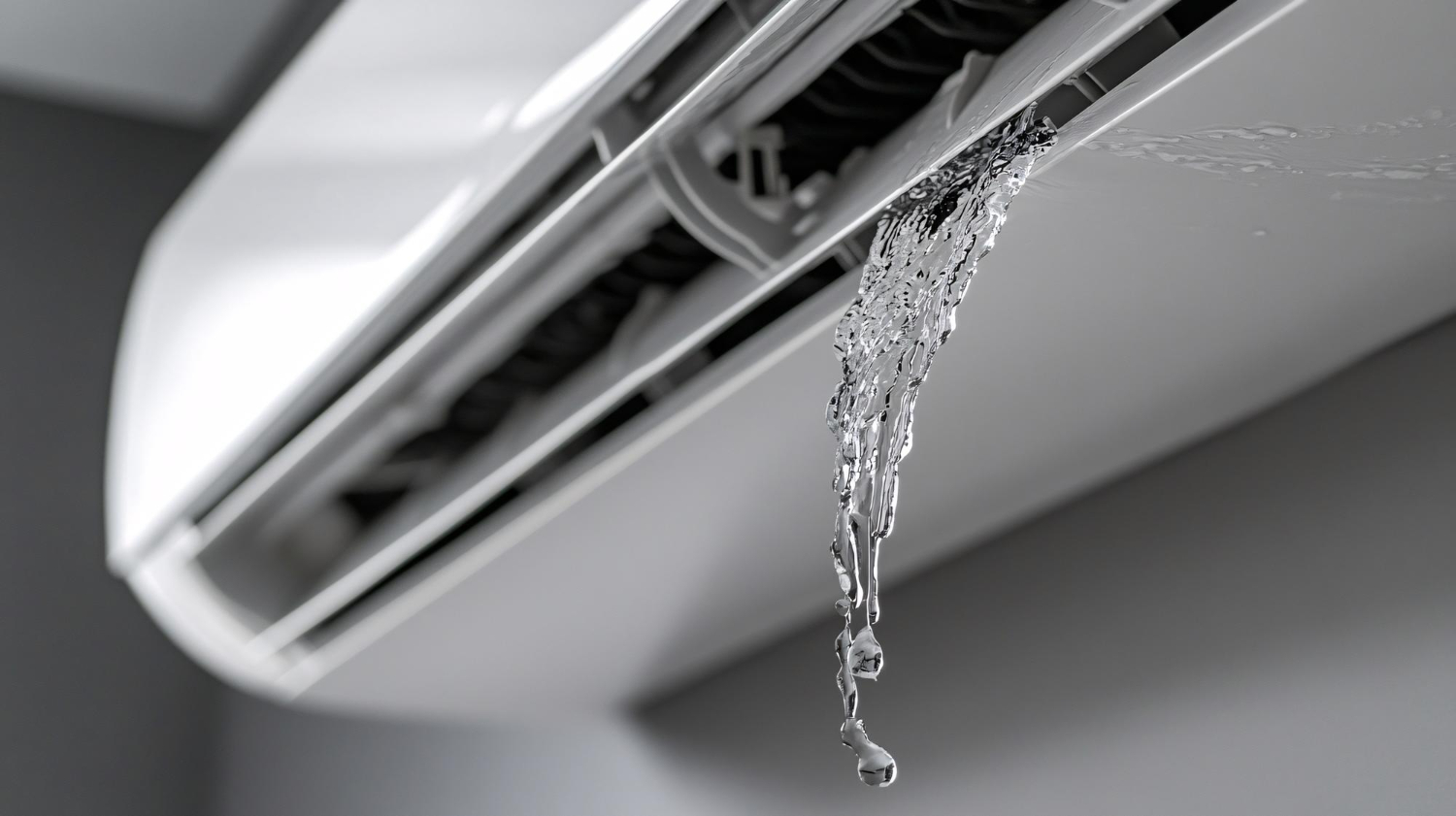An air conditioner should cool your home in Sandy, not soak your floors or walls. If you’ve noticed water pooling around your indoor unit or seen stains on your ceiling below the AC system, you’re likely dealing with a water leak. These types of issues can seem small at first, but if left alone, they can do major damage to your home. In most cases, water leaks from AC systems point to an issue within the unit that needs attention.
Keeping your AC system running properly during the summer season depends on preventive care and fast response when problems like leaks appear. One way to avoid water damage is by sticking with consistent AC maintenance in Sandy. When your system is regularly checked, the chances of clogs or unnoticed damage are much lower. But if trouble has already begun, it’s helpful to understand what causes AC water leaks and how to spot them early.
Common Causes of AC Water Leaks
Water leaking from your AC isn’t normal. Modern AC systems are designed to remove moisture from your home’s air and drain it safely outdoors. When something in that process fails, water often ends up in places it shouldn’t be. These are some of the most common reasons AC units in Sandy start to leak.
1. Clogged Condensate Drain Line
This is one of the most frequent culprits behind indoor water leaks. Over time, dirt, dust, and algae can build up inside the drain line, blocking the water’s path out of your home. When this happens, moisture backs up and overflows near the indoor unit.
2. Dirty or Frozen Evaporator Coils
If airflow across your evaporator coils is restricted, the temperature can drop too low, and ice may form on the coil. When the system shuts off or warms up, the ice melts all at once, creating more water than the drain pan can manage. This often leads to dripping or puddling nearby.
3. Low Refrigerant
Running low on refrigerant can also cause your evaporator coils to freeze. Like with dirty coils, this freezing leads to excessive moisture when the system finally thaws. Leaks from this cause can be hard to distinguish without professional help.
4. Broken or Malfunctioning Condensate Pump
Some AC systems, especially those installed in basements, use a condensate pump to push water out of the home. If the pump fails or loses power, water can pool around the unit since it has no way to exit through the pipe.
In homes across Sandy, these types of issues might grow over time and remain unnoticed until water starts damaging floors, trim, or walls. So staying alert to early warning signs is key to staying ahead of expensive repairs.
Identifying and Troubleshooting AC Leaks
If you’ve started seeing water near your unit or notice high humidity indoors despite the AC working, take time to examine the system. Here’s how to spot and troubleshoot potential leaks before calling for service:
– Look for moisture around the indoor unit or vent openings
– Check your air filter and change it if it looks dirty or clogged
– Inspect the drain pan for cracks or standing water
– Find the PVC drain line and see if water is flowing through as it should
– If possible, see if there’s ice buildup on or near the evaporator coil
You can also test the drain line by slowly pouring a small amount of water into the drain pan. If the water doesn’t flow out or backs up, the line is likely clogged.
Air filters also play a role in keeping your system dry. If filters are clogged, airflow drops, coils get colder, and freezing starts. Switching filters every 1 to 3 months is one of the simplest ways to avoid this scenario.
Low refrigerant is trickier to identify without gauges, but signs like reduced cooling output or ice formation may point in that direction. If any of these issues appear, it’s best to have our technicians inspect the system to stop leaks before they turn into structural damage.
Preventive Measures to Avoid AC Water Leaks
Preventing AC water leaks in your Sandy home doesn’t have to be complicated. Routine care and a few simple checks can go a long way in stopping problems before they start. One of the most important steps is scheduling AC maintenance regularly. This allows trained technicians to catch minor issues like growing clogs or refrigerant changes before they turn into larger repairs.
To stay ahead of potential water damage, here are a few preventive actions every homeowner in Sandy should take:
– Schedule annual AC maintenance to inspect and clean the unit properly
– Keep the condensate line free from blockages by having it flushed periodically
– Replace air filters every 1 to 3 months to maintain healthy airflow through the coils
– Make sure the drain pan isn’t cracked or rusted through
– Have refrigerant charge levels checked to avoid low pressure and freezing
– Inspect insulation around the evaporator coil and air handler to prevent condensation from forming where it shouldn’t
In homes where the condensate pump is used, ask our technicians to test it during each seasonal tune-up. If the pump is old or noisy, it may be working inefficiently even if it hasn’t completely failed yet. By staying consistent with AC maintenance in Sandy, you help protect your unit from wear and tear while keeping your home safe from avoidable water damage.
When and Why to Call Our Professionals
Sometimes the signs of an AC water leak are clear. Other times they can go unnoticed until it’s too late. If you can’t find the source of the leak or if your system is shutting down unexpectedly, it’s time to call our professionals. Our technicians know what to look for and can inspect your AC system thoroughly without risking further damage.
Here are common situations where a professional inspection is recommended:
– You’ve cleared the drain line, but water is still pooling by the unit
– There’s visible ice buildup on the refrigerant lines or coils
– Your AC unit is short-cycling or making unusual noises
– The condensate pump runs constantly or not at all
– You suspect a refrigerant issue due to poor cooling and leaks
Trying to fix these problems without the right tools or experience could make the damage worse or mask the real issue. That’s why it’s better to rely on expert help when moisture appears near your system.
Keeping Your Sandy Home Dry and Comfortable
Managing AC water leaks early helps protect both your equipment and your home. The longer these leaks go unchecked, the more damage they can do to your walls, floors, and ceilings. Fixing stained drywall or warped flooring is a lot more expensive than staying current with your HVAC maintenance.
For homeowners in Sandy, staying proactive means paying attention to warning signs and handling small issues before they grow. Regular AC maintenance, a few seasonal checks, and quick responses to leaks can keep your cooling system running smoothly each summer. With help from experienced technicians, you can enjoy a dry and comfortable home without worrying about water damage.
If you are ready to ensure long-lasting comfort and reliability in your home, consider scheduling regular AC maintenance in Sandy to prevent minor issues from becoming costly repairs. At Keystone Heating and Air, our professionals understand the value of routine upkeep and prompt attention to potential problems. For a quick estimate or to book a service visit, please contact us today.






